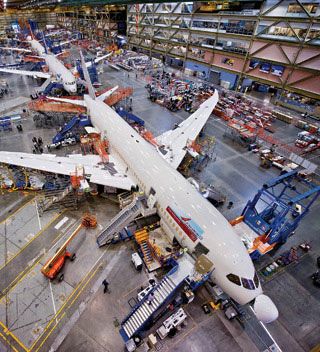Boeing 787 Dreamliner To Be Cleared for Liftoff
The FAA is reported to be satisfied with Boeing's fix for its lithium-ion battery problem
Lithium-ion batteries store more energy per unit of weight and of volume than the older, nickel-cadmium batteries, but that wasn't the main reason why Boeing opted for them. After all, batteries make up only a tiny share of an airliner's weight, even for the 787, which relies more on electricity for its operation than any other airliner in history. Designers liked the lithium-ion technology, rather, because it charges faster than nickel-cadmium and—ironically—because it was supposed to require less fuss. Of course, the problem with lithium-ion batteries is that are volatile. That's a fancy way of saying that once in a while, they explode in flames.
Two months ago Boeing's archrival Airbus announced that its upcoming A350 airliner—an answer to the 787, both technologically and commercially—would revert to the tried-and-true nickle-cadmium battery. Airbus still exerts tight control over every step in making its planes. Boeing, however, ceded to its vendors not only much of the manufacturing but also a lot of design work for the 787. Some industry analysts blame the battery problems on this strategy.
Photos: NTSB, Boeing
Philip E. Ross is a senior editor at IEEE Spectrum. His interests include transportation, energy storage, AI, and the economic aspects of technology. He has a master's degree in international affairs from Columbia University and another, in journalism, from the University of Michigan.
